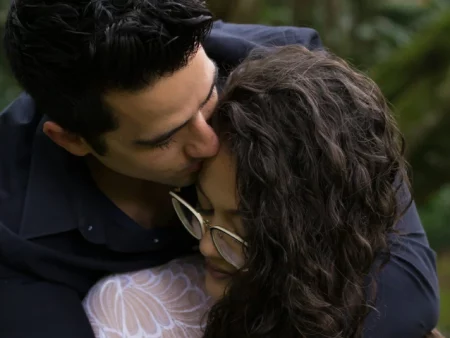In the intricate tapestry of human connection, hugs stand out as a powerful thread, weaving together the physical and emotional aspects of our relationships. These silent yet profound gestures serve as a universal language, transcending words to convey comfort, love, and support. Understanding the nuances of different embraces can unlock a deeper level of communication, enhancing our bonds with friends, family, and partners.
From the heartfelt bear hug that envelops you in warmth to the gentle side embrace that respects personal space, each type of hug carries its own unique message. These shared moments of closeness can strengthen trust, foster intimacy, and provide reassurance in times of need. By learning to recognize and appreciate various forms of hugs, we can better express our feelings and interpret the genuine intentions of others. Whether it’s a brief squeeze or a lingering cuddle, hugs offer a cozy refuge of affection and connection in our fast-paced world.
The Science Behind Hugging
The science behind hugging reveals a fascinating interplay of physiological and psychological processes that contribute to our well-being. When we engage in a hug, our bodies release a cocktail of hormones and neurotransmitters that profoundly affect our mood and health. This intimate form of touch triggers the release of oxytocin, often called the “cuddle hormone,” which promotes feelings of bonding and affection.
Research has uncovered numerous benefits of hugging:
- Stress reduction: A tight embrace lowers cortisol levels, helping us relax and feel calmer
- Mood enhancement: Hugs boost serotonin production, elevating our spirits
- Pain relief: Physical contact can reduce pain perception by releasing endorphins
- Immune system support: Regular hugging may strengthen our body’s defenses
- Blood pressure regulation: A caring hug can help normalize blood pressure
- Protective effect: Hugs can create a sense of safety and security
Whether it’s a brief squeeze between friends or a romantic embrace, hugs offer a meaningful way to connect and improve our overall well-being. Even a spontaneous hug from a friendly hugger can turn an awkward moment into a sentimental experience that strengthens our social bonds. The simple act of wrapping our arms around someone can create a powerful, protective cocoon of emotional support.
20 Types of Hugs and Their Meanings
Hugs convey powerful messages without words, each type offering unique insights into relationships. From the enveloping bear hug to a gentle pat, these gestures are cornerstones of nonverbal communication. Understanding their nuances can enhance our connections, fostering deeper emotional bonds.
Whether a quick greeting or heartfelt exchange, hugs express care and support. Recognizing various forms helps navigate social interactions, strengthening friendship ties and creating nurturing environments. Learning this silent language of embrace opens doors to improved empathy and emotional intelligence, allowing us to connect more meaningfully with people around us.
1. The Bear Hug
The bear hug stands out as the quintessential expression of wholehearted affection. This all-encompassing embrace involves wrapping both arms fully around another person, creating a cocoon of warmth and security. Unlike fleeting gestures, the bear hug communicates profound care through its enveloping nature and gentle pressure.
Typically reserved for moments of intense emotion, this hug often punctuates joyous reunions, celebrations of triumph, or offers solace during challenging times. Its power lies in its ability to convey unspoken support, melting away tension and fostering a deep sense of belonging.
The emotional impact of a bear hug is rooted in its ability to create a temporary refuge from the world, allowing both giver and receiver to share a moment of pure connection. This gesture can strengthen the bond between individuals, serving as a powerful reminder of their importance to one another. Research suggests that such embraces can even reduce stress and anxiety levels.
2. The Side Hug
The side hug balances closeness and personal boundaries. This casual gesture involves placing an arm around the other’s shoulder or lower back, creating a subtle connection. It’s ideal for greeting acquaintances, colleagues, or family members in public settings where a full embrace might feel too intimate. This type of hug conveys friendship without overstepping social norms, particularly useful in professional environments or first meetings. It can also provide comfort during difficult conversations while maintaining respectful distance. Interestingly, the side hug is often favored by those valuing personal space or uncomfortable with full-body contact. It allows individuals to show care without compromising comfort levels, making it a versatile and widely accepted form of interaction. This adaptable gesture suits various social situations, fostering connection while respecting individual preferences.
3. The Back Hug
The back hug is an intimate gesture that speaks volumes in relationships. This tender embrace involves wrapping arms around a partner from behind, creating a cocoon of affection and security. It’s a silent yet powerful way to communicate love, offering comfort and romance simultaneously. The back hug often signifies a strong emotional bond, requiring trust to allow someone into such a vulnerable position.
This type of hug can be incredibly soothing, providing a sense of protection and support. It’s particularly comforting during stressful or sad moments, offering a physical reminder of presence and care. The back hug can also be deeply romantic, fostering intimacy through close body contact and the feeling of being enveloped by a loved one’s warmth. Whether used for reassurance or expressing desire, it remains a cherished form of non-verbal communication.
4. The Heart-to-Heart Hug
The heart-to-heart hug epitomizes emotional intimacy, fostering a profound connection between two individuals. This unique gesture involves positioning the left side of the chest against the other person’s, allowing hearts to align closely. By intertwining arms and gently pressing together, this hug creates a cocoon of vulnerability and trust, ideal for moments of deep emotional significance.
The heart-to-heart hug is a powerful tool for nonverbal communication. It allows partners to express deep feelings, providing comfort and assurance. This intimate embrace can strengthen bonds during challenging times and celebrate joyous occasions with unparalleled depth.
When executed mindfully, this hug becomes a transformative experience, nurturing emotional well-being. It’s particularly effective in conveying sincere emotional support, making it a go-to gesture for those seeking to deepen their relationships or offer genuine comfort to loved ones.
5. The Group Hug
The group hug stands as a powerful symbol of unity and collective support. This inclusive gesture brings multiple individuals together in a shared moment, creating a circle of warmth. Often spontaneous, group hugs emerge during celebrations, solidarity, or shared emotional experiences. They serve as a physical manifestation of team spirit, family bonds, or friendship circles.
Beyond mere contact, group hugs foster a sense of belonging and shared identity. They break down social barriers, allowing participants to feel part of something larger than themselves. In times of joy, these huddles amplify happiness; in moments of sorrow, they offer collective strength. The psychological impact is significant, releasing oxytocin and promoting feelings of trust and social bonding. Whether comforting a grieving friend or celebrating a team victory, the group hug remains a powerful tool for expressing solidarity and strengthening communal ties.
6. The Quick Hug
The quick hug is a fleeting yet impactful gesture, often lasting mere seconds. This swift embrace serves as a casual greeting or acknowledgment, perfect for social situations where time or intimacy constraints exist. It’s characterized by a brief contact, typically involving a light squeeze and immediate release. This type of hug is ideal for acquaintances, colleagues, or distant relatives, striking a balance between friendliness and maintaining personal boundaries.
Despite its brevity, the quick hug can still convey genuine warmth and recognition. It’s particularly useful in fast-paced environments or when encountering someone unexpectedly. The beauty of this hug lies in its versatility – it can be a cheerful hello, a supportive gesture, or a respectful farewell. When executed with sincerity, even this fleeting contact can strengthen social bonds and leave a positive impression. In professional settings, it offers a way to acknowledge relationships without overstepping boundaries, making it a valuable tool in navigating workplace dynamics.
7. The Lingering Hug
The lingering hug is a profound expression of deep emotional connection, characterized by its extended duration and intensity. Unlike brief encounters, this type of hug involves holding on for an extended period, often lasting 20 seconds or more. It typically occurs between individuals with a strong bond, such as close friends, family members, or romantic partners. This prolonged embrace communicates a depth of feeling that transcends words, offering comfort, reassurance, and unwavering support.
In moments of joy, a lingering hug amplifies shared happiness, creating a bubble of blissful connection. During times of distress, it serves as a silent pillar of strength, providing solace and understanding. The power of this hug lies in its ability to convey complex emotions without uttering a single word, making it a cherished form of non-verbal communication in close relationships. Research suggests that extended hugs can significantly reduce stress and anxiety levels, promoting overall well-being.
8. The Pat-on-the-Back Hug
The pat-on-the-back hug blends physical closeness with encouragement, combining a brief embrace and a gentle upper back pat. This gesture creates a supportive yet respectful connection, common in professional settings or among acquaintances. It acknowledges achievements or provides comfort without overstepping boundaries. The pat serves as a non-verbal “well done” or “hang in there,” ideal for celebrating successes or offering solace during challenges. This hug variant balances warmth and propriety, allowing individuals to express care while maintaining appropriate distance. Its versatility makes it valuable in social interactions, fostering positive relationships across contexts. Research suggests that such physical contact can boost oxytocin levels, promoting feelings of trust and bonding. When executed with sincerity, even this brief interaction can strengthen social ties and leave a lasting positive impression.
9. The Waist Hug
The waist hug embodies a delicate balance of intimacy and protection, often signifying a deep romantic connection. This gesture involves one partner encircling the other’s waist, drawing them close to their midsection. It’s a tender expression that communicates both affection and a desire to shield one’s partner from harm. In romantic relationships, this hug type can foster a sense of security and belonging, reinforcing the emotional bond between partners. The protective nature of the waist hug is evident in how it envelops the recipient, creating a physical barrier against the outside world. Simultaneously, it allows for eye contact and facial proximity, enhancing the intimate aspect of the embrace. This dual nature makes the waist hug a powerful nonverbal tool for expressing love, trust, and commitment in romantic partnerships. Its effectiveness lies in combining physical closeness with emotional reassurance, making it a cherished gesture between couples.
10. The Pickup Hug
The pickup hug is a joyous expression that lifts one person off their feet. This dynamic gesture often includes a gentle spin, perfect for celebrating milestones or reunions. It conveys overwhelming happiness and excitement beyond words. Typically reserved for close relationships with established physical boundaries, it’s common among romantic partners, best friends, or family members. The act symbolizes elevating someone’s importance, literally putting them on a pedestal. While fun, it’s crucial to ensure both parties are comfortable with this level of interaction.
This exuberant hug type requires strength and coordination, making it a unique way to express affection. It creates a memorable moment, combining physical closeness with a sense of elation. However, it’s important to consider the setting and relationship before initiating such an enthusiastic embrace.
The Role of Hugs in Different Relationships
Hugs play a vital role in various relationships, conveying different meanings and levels of intimacy. The appropriateness of a hug depends on the nature of the relationship and the context. Understanding these nuances can help strengthen bonds and avoid social awkwardness.
| Relationship Type | Appropriate Hug Styles | Considerations |
|---|---|---|
| Romantic Partners | Bear hug, Heart-to-heart, Waist hug | More intimate, longer duration |
| Family Members | Bear hug, Quick hug, Pat-on-the-back | Varies by family dynamics |
| Close Friends | Side hug, Quick hug, Group hug | Depends on comfort level |
| Colleagues | Quick hug, Pat-on-the-back | Professional setting limits |
| Acquaintances | Side hug, Quick hug | Brief, less intimate contact |
The key is to respect personal boundaries and cultural norms while expressing genuine care through appropriate physical contact. Consider the setting, occasion, and individual preferences when initiating a hug. In professional environments, it’s often best to err on the side of caution and opt for less intimate forms of greeting. For closer relationships, the type and duration of hugs can evolve, reflecting the depth of the connection. Remember that not everyone is comfortable with physical contact, so always be attentive to nonverbal cues and respect others’ personal space.
Cultural Differences in Hugging
Hugging customs vary significantly across cultures, reflecting diverse social norms and values. Here’s a glimpse into the global tapestry of hug practices:
- Mediterranean and Latin American cultures often greet with warm hugs and kisses, even among acquaintances
- In Japan, bowing is preferred over hugging, which is reserved for close relationships
- Middle Eastern countries generally discourage public displays of affection between opposite genders
- Northern European nations tend to be more reserved, with hugging less common in casual interactions
- In Thailand, the traditional greeting involves pressing palms together in a prayer-like gesture
- African cultures often incorporate dance-like movements into greetings, sometimes including light hugs
- In India, hugging is becoming more accepted among younger generations but remains less common in formal settings
- Native American tribes have diverse customs, with some incorporating hug-like gestures in ceremonial contexts
- Scandinavian countries generally maintain more personal space, with hugging reserved for close friends and family
- In Russia, a firm handshake is common for men, while women may greet with a light hug and cheek kisses
These cultural nuances highlight the importance of understanding local customs when traveling or interacting with people from different backgrounds. While hugging is a widespread gesture, its interpretation and acceptance vary widely across the globe, necessitating cultural sensitivity and awareness in cross-cultural interactions.
The Benefits of Hugging
The act of hugging transcends mere physical contact, offering a myriad of benefits that nurture both body and mind. This simple gesture triggers a cascade of positive physiological responses, reducing stress hormones like cortisol while boosting mood-enhancing chemicals such as oxytocin and serotonin. These biochemical changes contribute to lowered blood pressure, decreased anxiety, and an overall sense of well-being.
Beyond its immediate effects, regular hugging can fortify our immune system, potentially warding off illnesses. It also plays a crucial role in fostering deeper connections, strengthening bonds between individuals through non-verbal communication of support and affection. In romantic relationships, hugs can reignite intimacy and trust, serving as a powerful tool for maintaining emotional closeness.
Hugging is a holistic therapy that nourishes our emotional landscape while simultaneously bolstering our physical health. It’s a testament to the power of human touch in promoting overall wellness and fostering resilient relationships. Research shows that a 20-second hug can significantly reduce stress hormones and increase oxytocin levels.
This profound impact of hugging on our well-being underscores its importance in daily life, encouraging us to embrace this simple yet potent gesture as a cornerstone of emotional and physical health.
Hugging Etiquette: Do’s and Don’ts
Navigating the world of hugging requires finesse and awareness. Here’s a comprehensive guide to help you hug appropriately:
- Always seek permission before initiating a hug, especially in professional settings
- Read body language carefully – open arms indicate receptiveness, while crossed arms suggest discomfort
- Respect cultural differences and personal boundaries
- Keep hugs brief in professional environments
- Avoid excessive body contact or inappropriate touching
- Be mindful of your grip – neither too tight nor too loose
- Pay attention to the occasion – celebratory events may warrant more enthusiastic hugs
- In business contexts, opt for handshakes unless a hug is clearly welcomed
- Never force a hug on someone who seems reluctant
- When in doubt, ask if the other person is comfortable with a hug
- Remember that some individuals may have physical or emotional reasons for avoiding hugs
- Consider the relationship – closer bonds may allow for longer, more intimate hugs
- Be aware of your surroundings – public spaces may call for more restrained gestures
- Maintain good hygiene to ensure a pleasant experience for both parties
By following these guidelines, you can ensure your hugs are always well-received and respectful, fostering positive connections in various social situations. Remember, a thoughtful approach to hugging can significantly enhance your interpersonal relationships.
Conclusion: The Power of a Hug
Understanding the nuances of hugging empowers us to forge deeper connections and navigate social interactions with grace. By recognizing the silent language of different hug types, we can communicate our emotions more effectively and respond appropriately to others’ needs. This awareness allows us to tailor our physical expressions of affection to various relationships and situations, strengthening bonds and fostering a sense of belonging.
As we embrace the power of hugging, let’s commit to being more mindful of our interactions. By considering cultural differences, respecting personal boundaries, and choosing the right type of hug for each occasion, we can create meaningful moments of connection. Remember, a well-timed and sincere hug has the potential to comfort, heal, and inspire. Let’s harness this simple yet profound gesture to build stronger, more empathetic relationships in our personal and professional lives. Hugging, when done appropriately, can be a powerful tool for enhancing our overall well-being and social connections.
Frequently Asked Questions About Types of Hugs
How long should a hug last?
The ideal hug duration varies depending on context and relationship. A brief, friendly hug typically lasts 3-5 seconds, while a comforting or intimate one may extend to 20 seconds or more. Research suggests that hugs lasting at least 20 seconds maximize oxytocin release, promoting bonding and stress relief. Consider the situation and the person's comfort level when determining hug length.
Can hugging improve my health?
Hugging offers significant health benefits. It releases oxytocin, reducing stress and lowering blood pressure. Regular hugs boost the immune system and elevate mood by increasing serotonin levels, potentially alleviating depression and anxiety. The physical contact in a hug can alleviate pain and promote overall well-being, making it a simple yet powerful tool for health enhancement.
Is it appropriate to hug in professional settings?
Hugging in professional settings is generally inappropriate and can cause discomfort. Maintain boundaries with handshakes or culturally acceptable greetings. In casual work environments or during significant events, a quick hug may be acceptable if both parties agree. Always prioritize respect and professionalism in workplace interactions.
How can I politely decline a hug?
To politely decline a hug, maintain a friendly demeanor while clearly communicating your preference. Say, "I appreciate the gesture, but I'm not comfortable with hugs right now." Offer an alternative like a handshake or wave. It's okay to set boundaries. If needed, explain briefly, but don't feel obligated to justify your choice.

Jeffrey Young is an American psychologist renowned for developing schema therapy. He founded the Schema Therapy Institute and is a leader in the field of cognitive behavioral therapy. Young has authored several influential books, including Schema Therapy for professionals and Reinventing Your Life for the general public.







